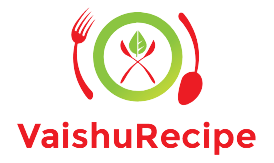Among personal finance, one important part of homeownership that frequently offers room for improvement is managing a mortgage. In order to lessen your monthly financial load, “Mortgage Makeover: Strategies to Lower Your Monthly Payment” explores the topic of mortgage optimization.
This book examines practical methods and enlightening advice that will enable homeowners to take charge of their mortgage payments, ultimately resulting in more stability and flexibility in their finances.
Whether you’re a seasoned homeowner trying to improve your financial situation or a first-time buyer, this resource is made to give you the information and resources you need to successfully navigate the complexity of mortgage management.
1. Understanding Your Mortgage
What is a Mortgage?
A mortgage is a loan taken out to purchase a home or property. It typically consists of principal and interest, with additional costs such as property taxes and homeowner’s insurance often included in the monthly payment.
Components of a Mortgage Payment
- Principal: The amount borrowed to purchase the home.
- Interest: The cost of borrowing money, expressed as a percentage of the principal.
- Property Taxes: Taxes assessed by local governments based on the value of the property.
- Homeowner’s Insurance: Insurance that protects against damage or loss to the home.
2. Evaluating Your Financial Situation
Assessing Your Budget
Before seeking ways to lower your mortgage payment, it’s crucial to assess your overall financial situation. Determine your monthly income and expenses to understand how much you can comfortably afford to pay towards your mortgage each month.
Analyzing Your Debt-to-Income Ratio
Your debt-to-income ratio (DTI) is a measure of your monthly debt payments relative to your gross monthly income. Lenders use this ratio to assess your ability to manage payments. Lowering your DTI can improve your chances of qualifying for a lower monthly mortgage payment.
3. Refinancing Your Mortgage
What is Mortgage Refinancing? Refinancing involves replacing your current mortgage with a new one, often with more favorable terms. This can include securing a lower interest rate, extending the loan term, or switching from an adjustable-rate to a fixed-rate mortgage.
Types of Refinancing Options
- Rate-and-Term Refinance: Focuses on securing a lower interest rate or changing the loan term without cashing out equity.
- Cash-Out Refinance: Allows you to borrow more than you owe on your current loan and receive the difference in cash.
- Streamline Refinance: Simplified refinancing process offered by some lenders for existing borrowers.
Pros and Cons of Refinancing
Pros:
- Potential for lower interest rates and monthly payments.
- Opportunity to change loan terms to better suit your financial goals.
- Consolidation of debts through cash-out refinancing.
Cons:
- Closing costs and fees associated with refinancing.
- Lengthened loan term may result in paying more interest over time.
- Potential impact on credit score due to a hard credit inquiry.
4. Negotiating with Your Lender
Exploring Mortgage Modification
Mortgage modification involves making changes to the terms of your existing loan to achieve a more affordable monthly payment. This can include reducing the interest rate, extending the loan term, or forgiving a portion of the principal balance.
Requesting Lower Interest Rates
If prevailing interest rates have decreased since you obtained your mortgage, you may be able to negotiate with your lender for a lower rate. A lower interest rate can significantly reduce your monthly payment and the overall cost of borrowing.
Extending the Loan Term
Extending the term of your mortgage, such as moving from a 15-year to a 30-year loan, can lower your monthly payments by spreading them out over a longer period. While this may result in paying more interest over time, it can provide immediate relief for those struggling with high payments.



